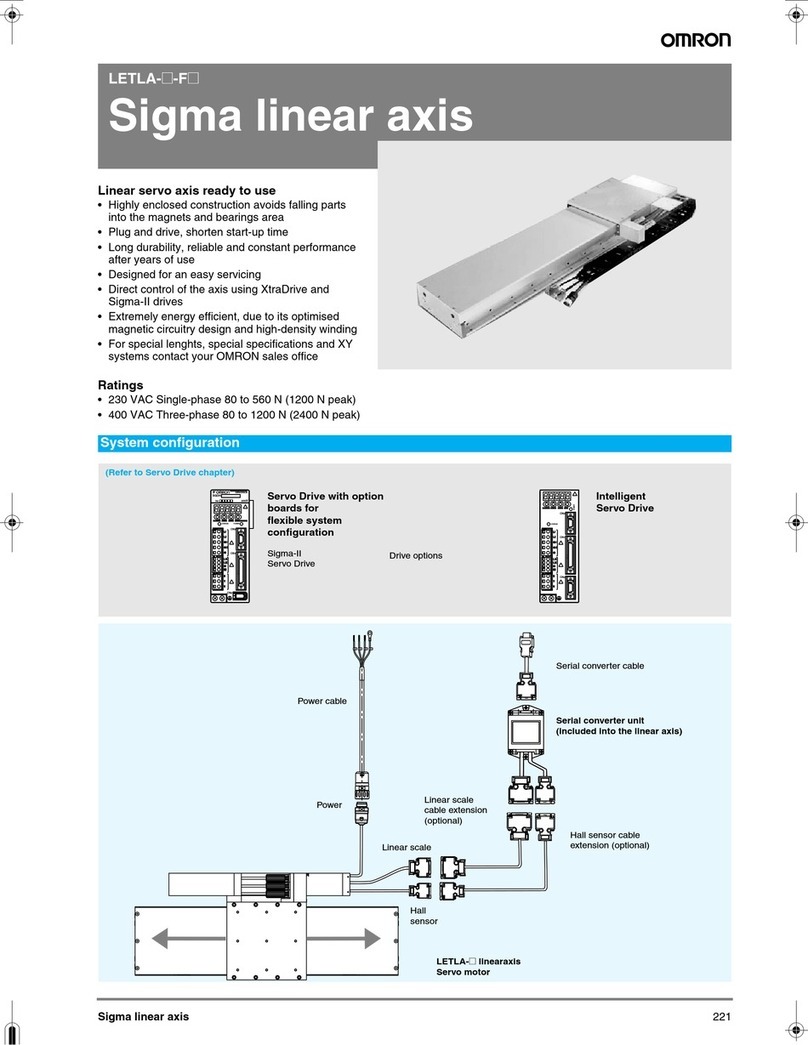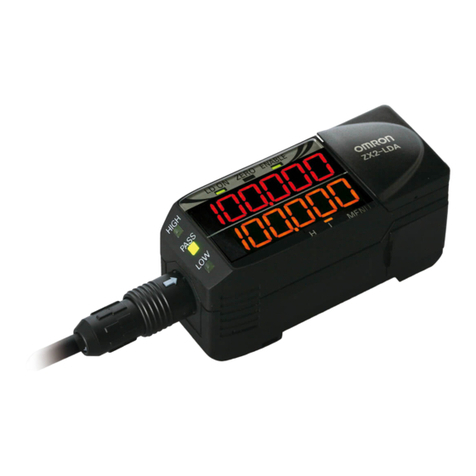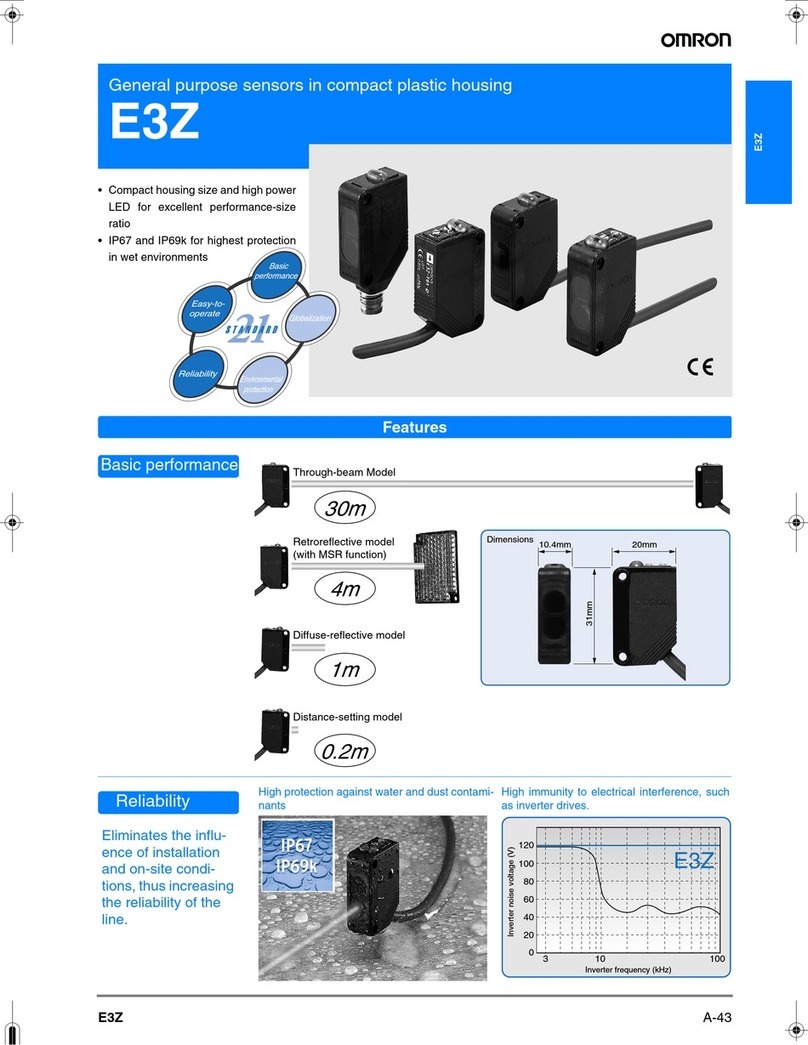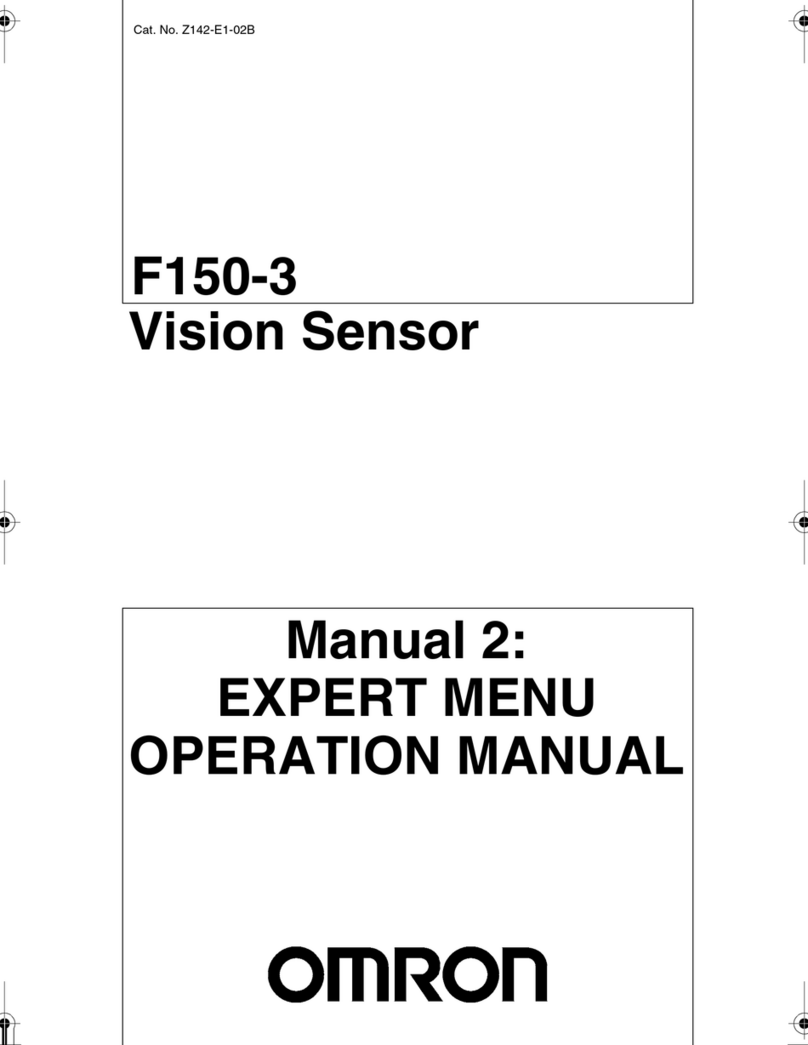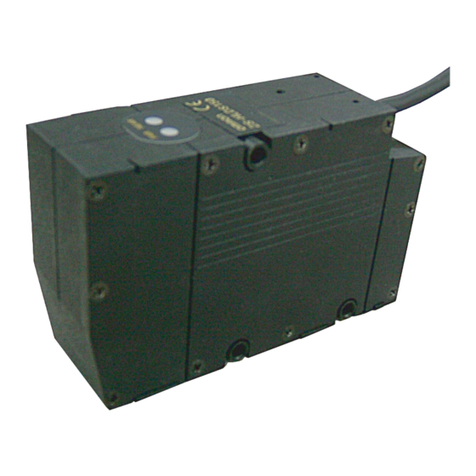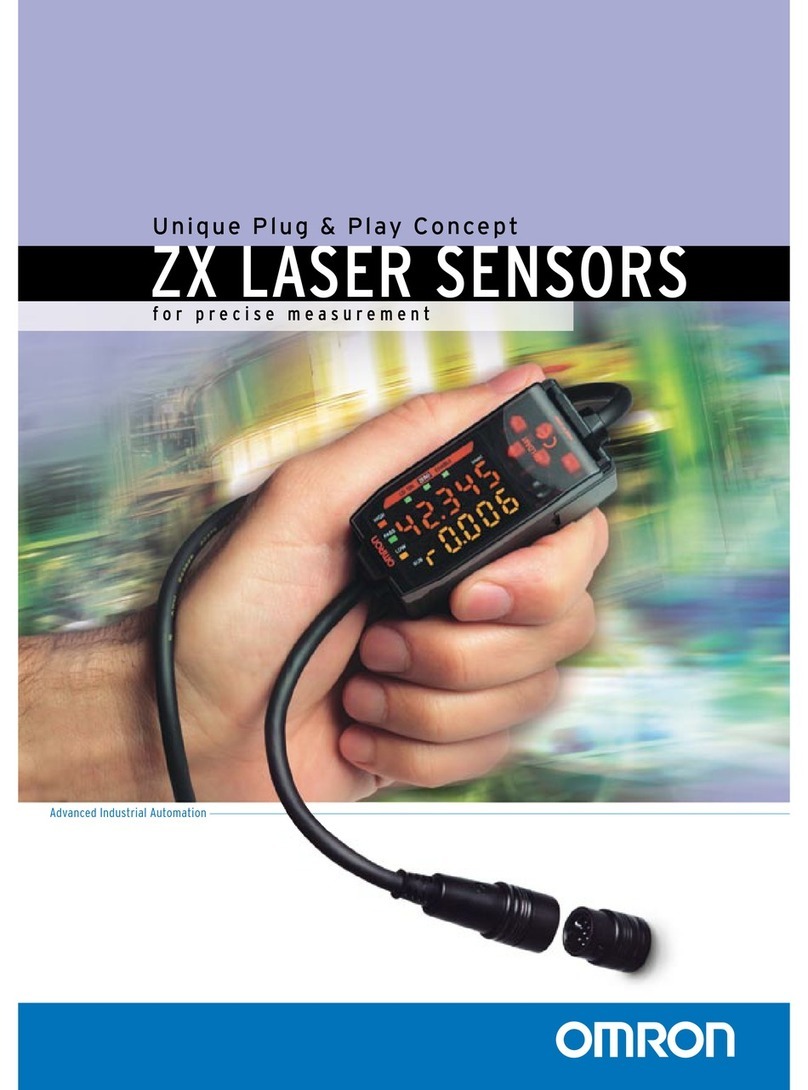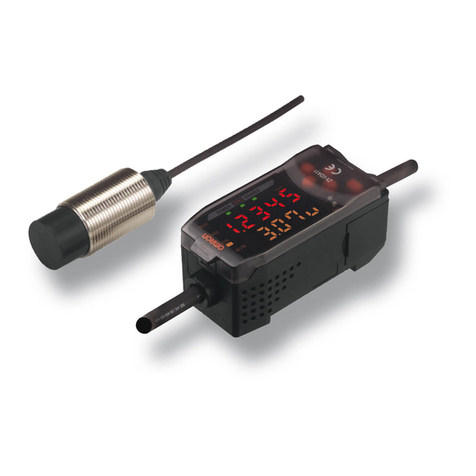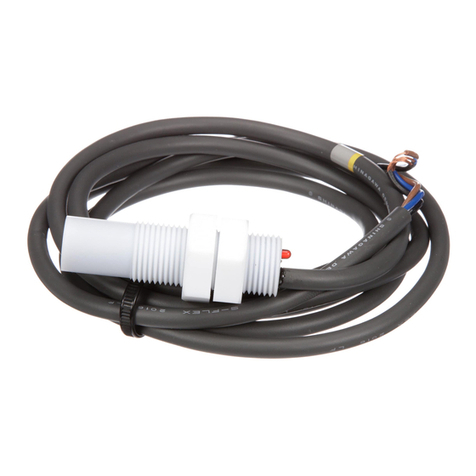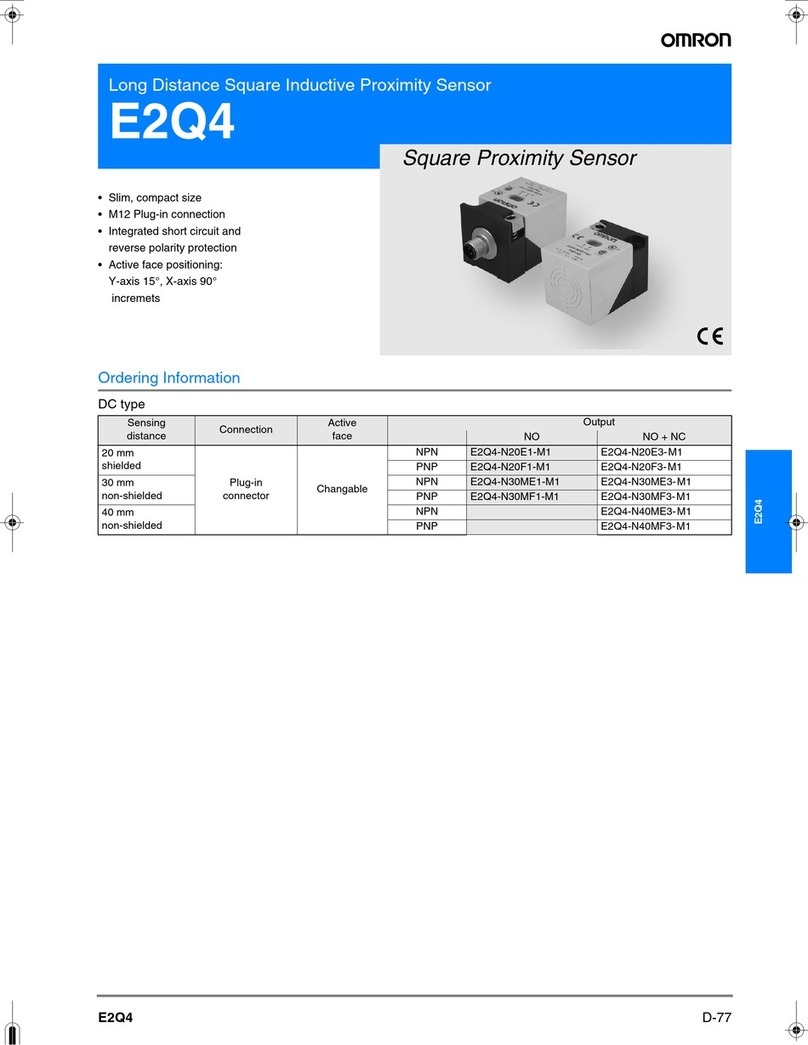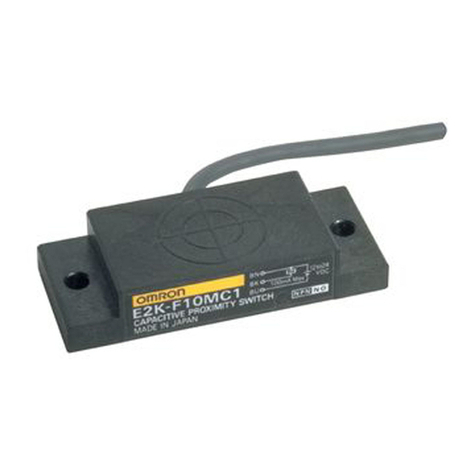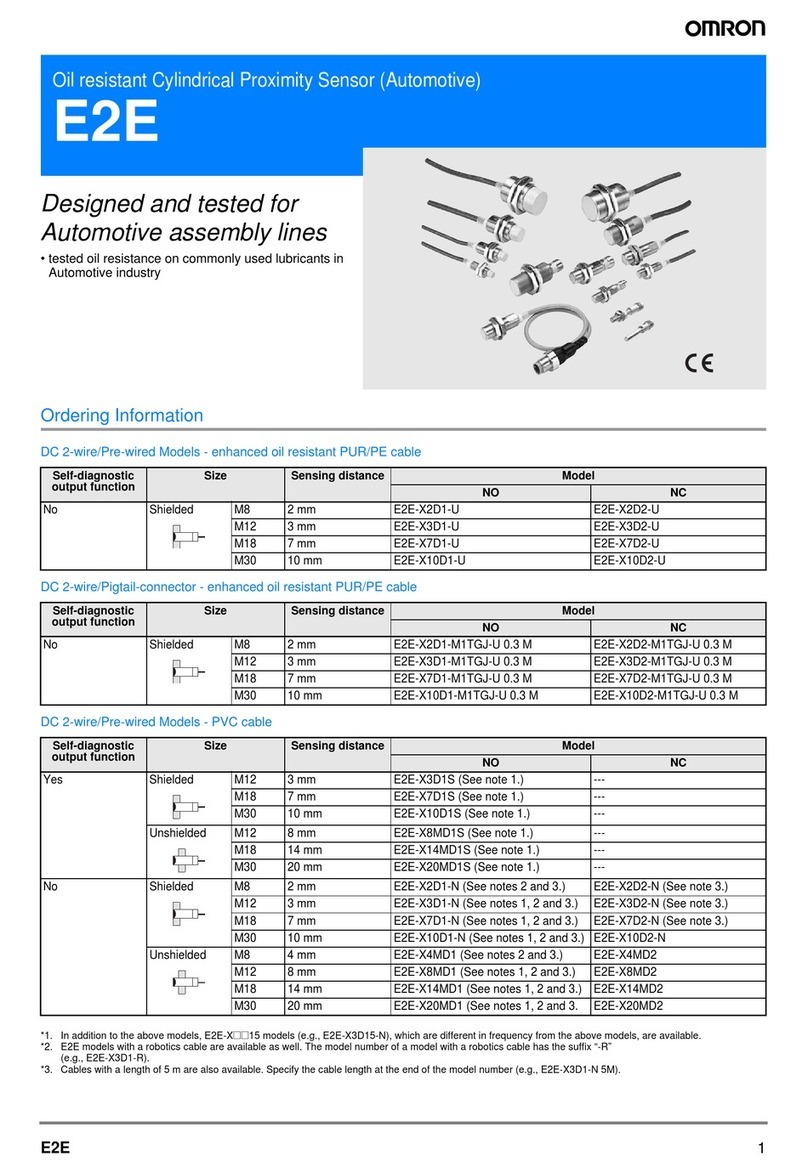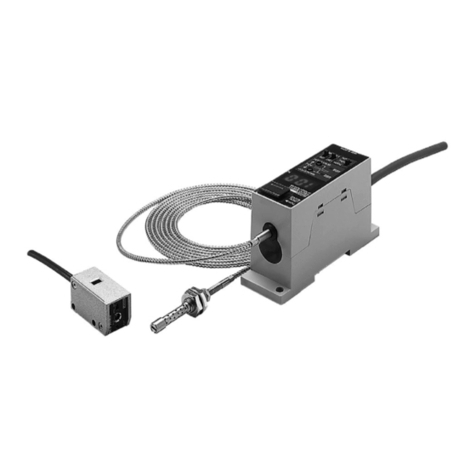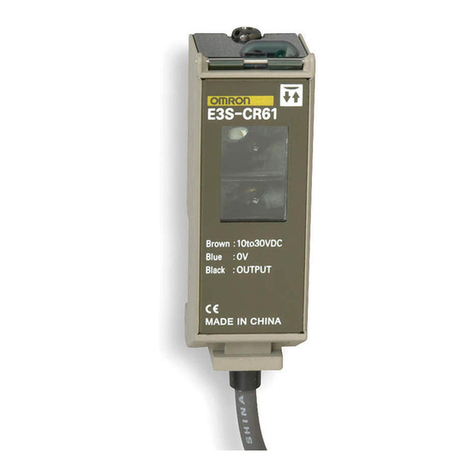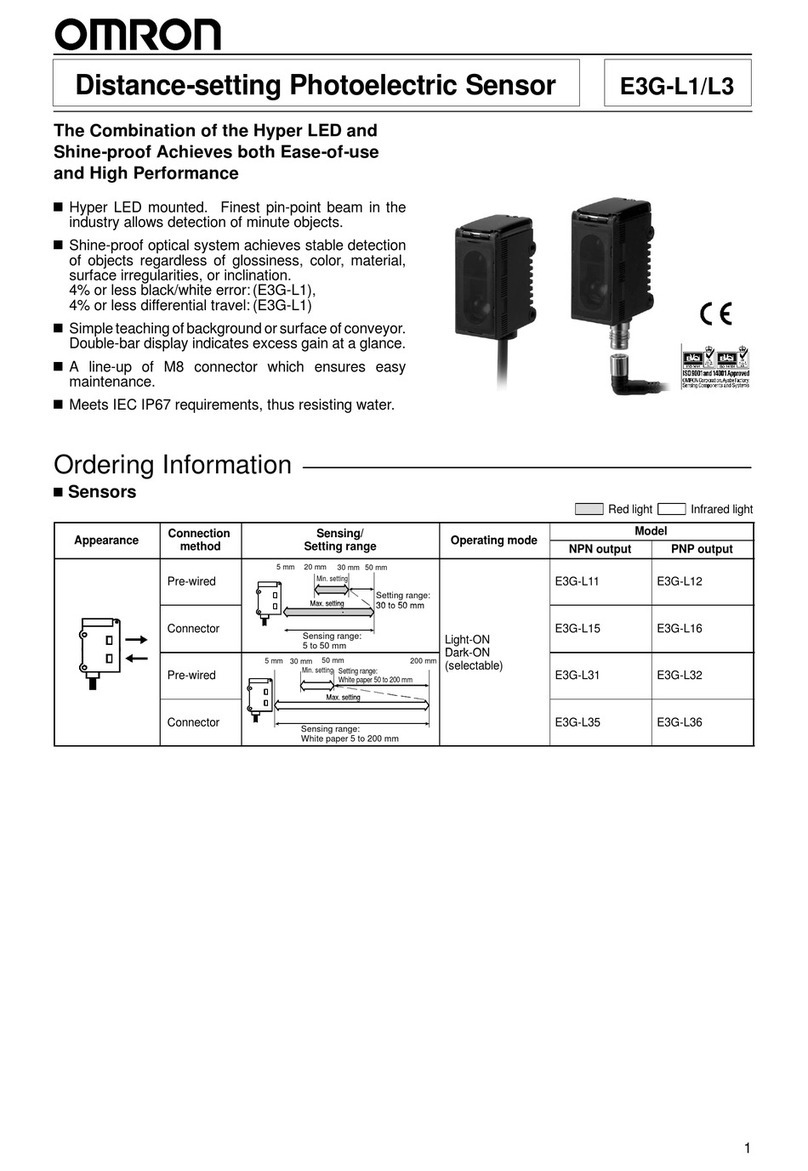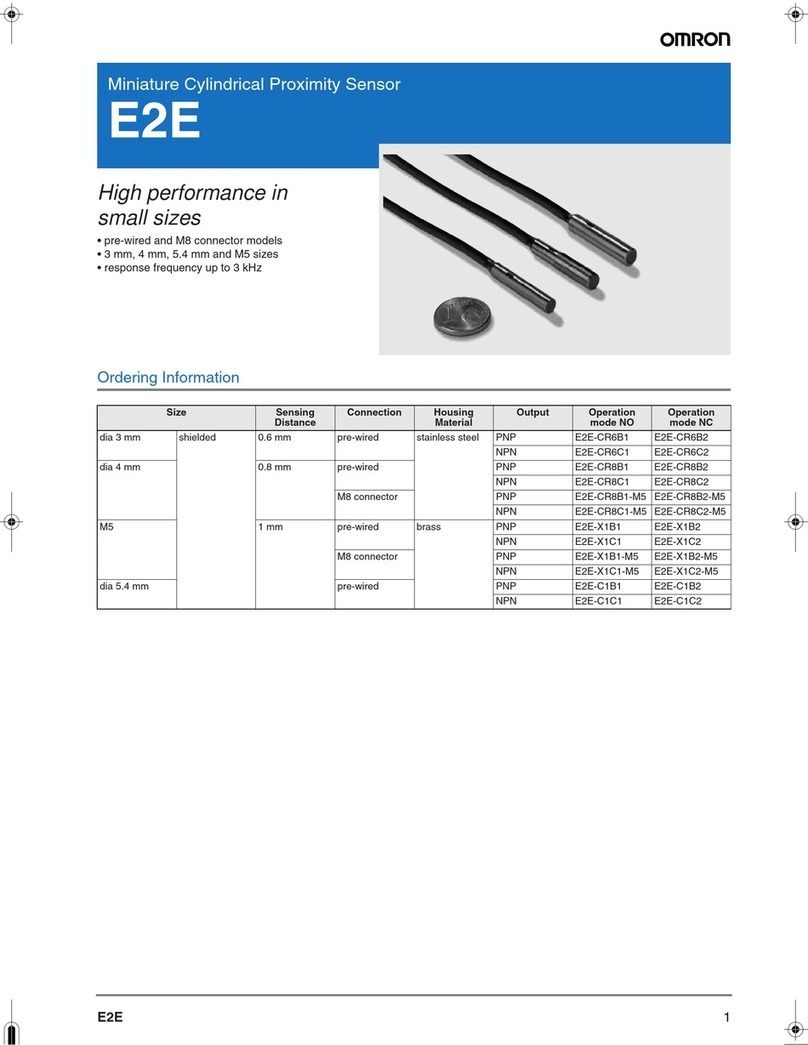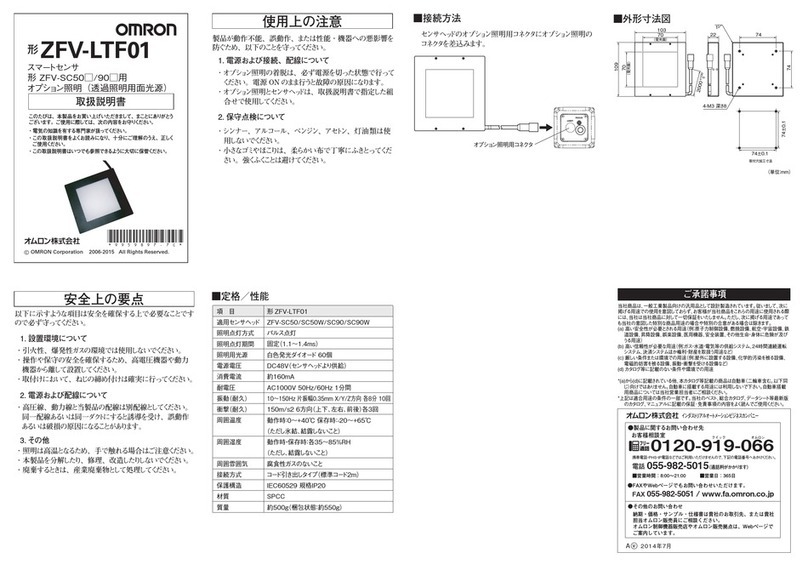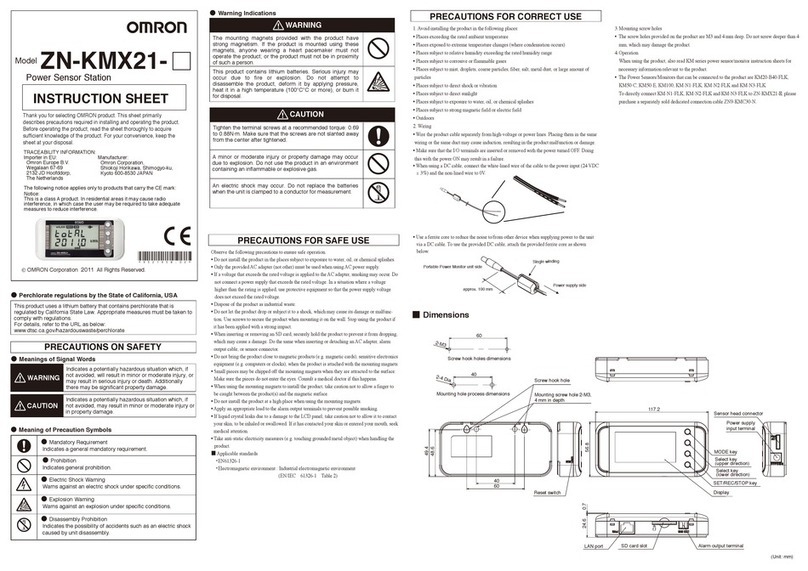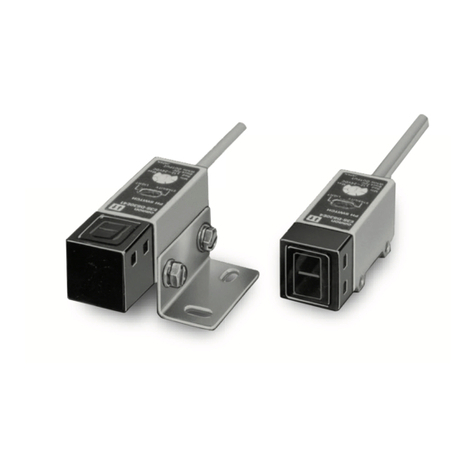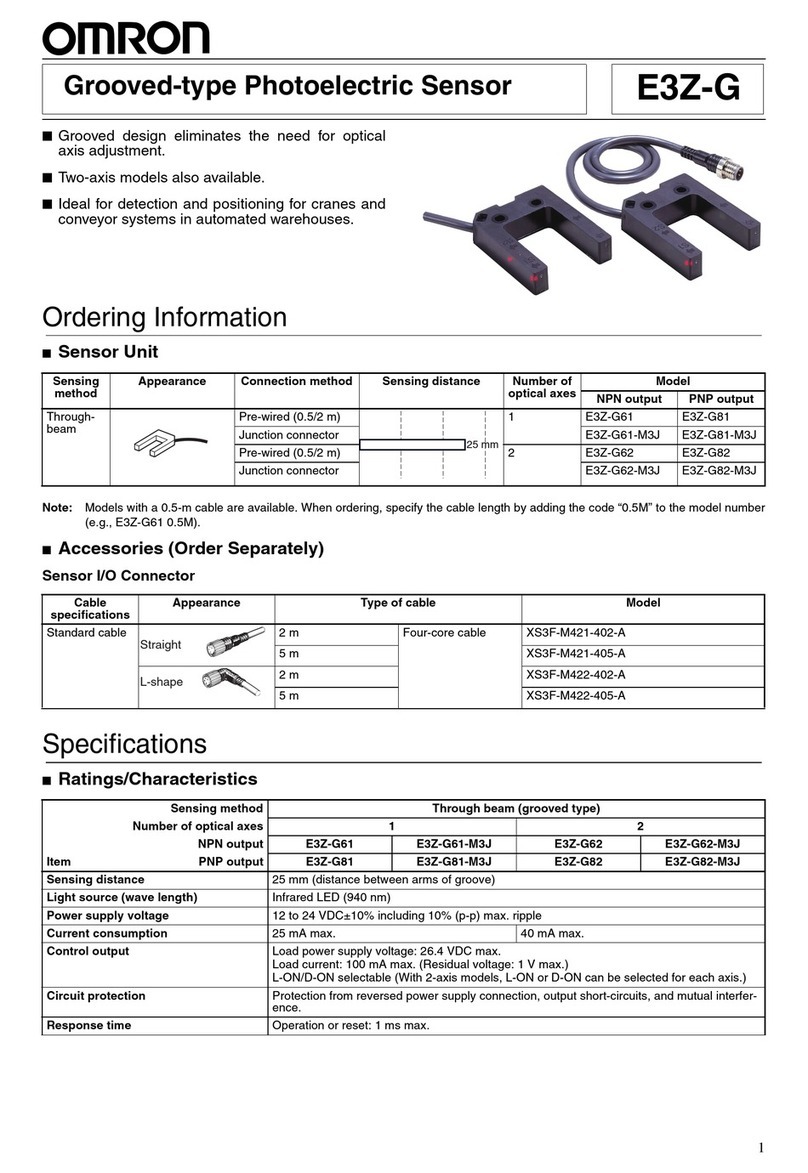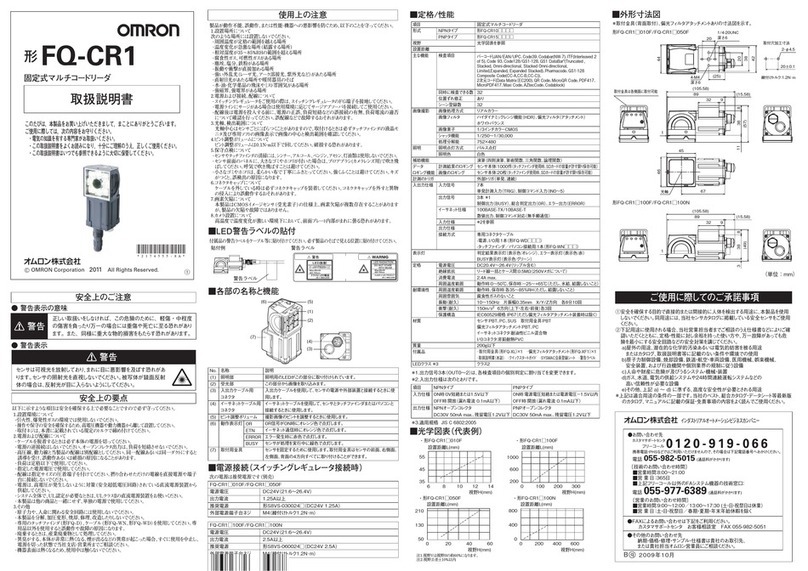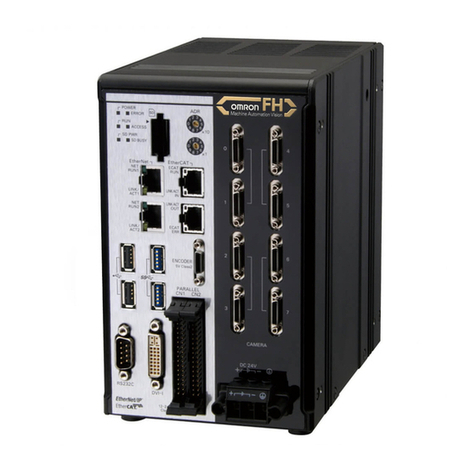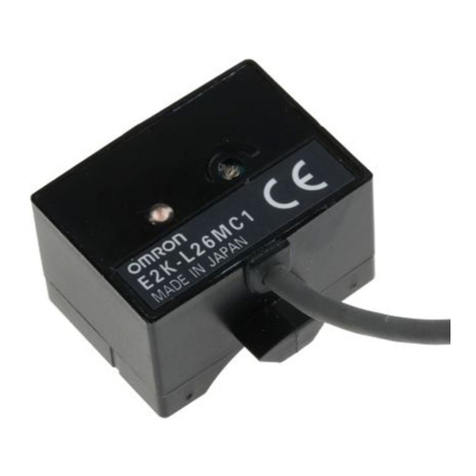A-204 Standard Photoelectric Sensors
Precautions
Fiber Units
Installation
Tightening Force
For the fiber unit installation, tighten it to the torque of 0.3 Nm
max.
Fiber Connection and Disconnection
E3X-NL amplifier has a push lock. Connect or disconnect the
fibers to or from E3X-NL amplifier using the following proce-
dures:
1. Connection
After inserting the fiber into the Amplifier, push the lock button
until a click sound is heard so that the fiber is securely con-
nected.
2. Disconnection
Ensure to press the push lock again to unlock before pulling
out the fiber, otherwise the fiber may be deteriorated.
(To maintain the fiber characteristics, remove the fiber after
making sure that the lock has been released.)
3. The fiber must be locked or released in a temperature
range of -10° to 40°.
Since face-to-face isntallation of the fiber units may cause
mutual interference, mount them so that the optical axes of
the sensors are not opposed.
Monting the sensor
If two or more sensors are used, face-to-face installation of
the fiber units or the regularly reflected light from the sensing
object may cause mutual interference. At this time, adjust the
fiber units to be mounted at the angles where the light of each
sensor is not received by the fiber unit of the other sensor.
●For adjustment
Two-point Teaching and One-point Teaching
Refer to the following information to select the most suitable
sensitivity setting method for the application.
Selection of Teaching Point(s)
Two-point Teaching
If E3X-NL is used to sense sensing objects that are only a little
different in glossiness from the background object and the
sensing objects have color patterns, the difference in glossi-
ness among the inks on the sensing objects may influence the
sensing operation of E3X-NL. Therefore perform two-point
teaching with E3X-NL at a place where E3X-NL can sense the
sensing objects smoothly while considering the characteris-
tics of glossiness versus distance of E3X-NL if the sensing po-
sition of each of the sensing objects is different from each
other.
One-point Teaching
If E3X-NL is used to sense sensing objects different from
each other in glossiness on a single background object, per-
form one-point teaching with E3X-NL using the background
object. If E3X-NL is used to sense identical sensing objects on
a variety of glossy background objects, perform one-point
teaching with E3X-NL using one of the sensing objects.
Operation Level Setting and Control Output for One-point Teaching
Correct Use
Lock button
Fiber insertion mark
Lock button
Locked Unlocked
Sensitivity
setting method Two-point teaching One-point teaching
Difference
In general, use 2-point teach-
ing. The fuzzy teaching func-
tion (refer to Technical Guide)
is activated to set the optimum
algorithms automatically,
drawing an operation level just
about between the two points
taught.
One-point teaching should
be performed for the sens-
ing of different objects on a
single background object or
a single type of objects on a
variety of glossy back-
ground objects.
The operating level will be
set 15% above or below the
teaching point, depending
on the glossiness of the first
sensing object.
The fuzzy teaching function
is not activated for 1-point
Vth selection
+
15%
-
15%
Teaching
ON
Glossiness
OFF
Control output
(L·ON)
Glossiness
Control output
(L·ON)
TEACH mode RUN mode
Vth on
upper side
Vth on
lower side
Vth selection
+
15%
-
15%
Teaching
ON
OFF
TEACH mode RUN mode
Vth on
upper side
Vth on
lower side
